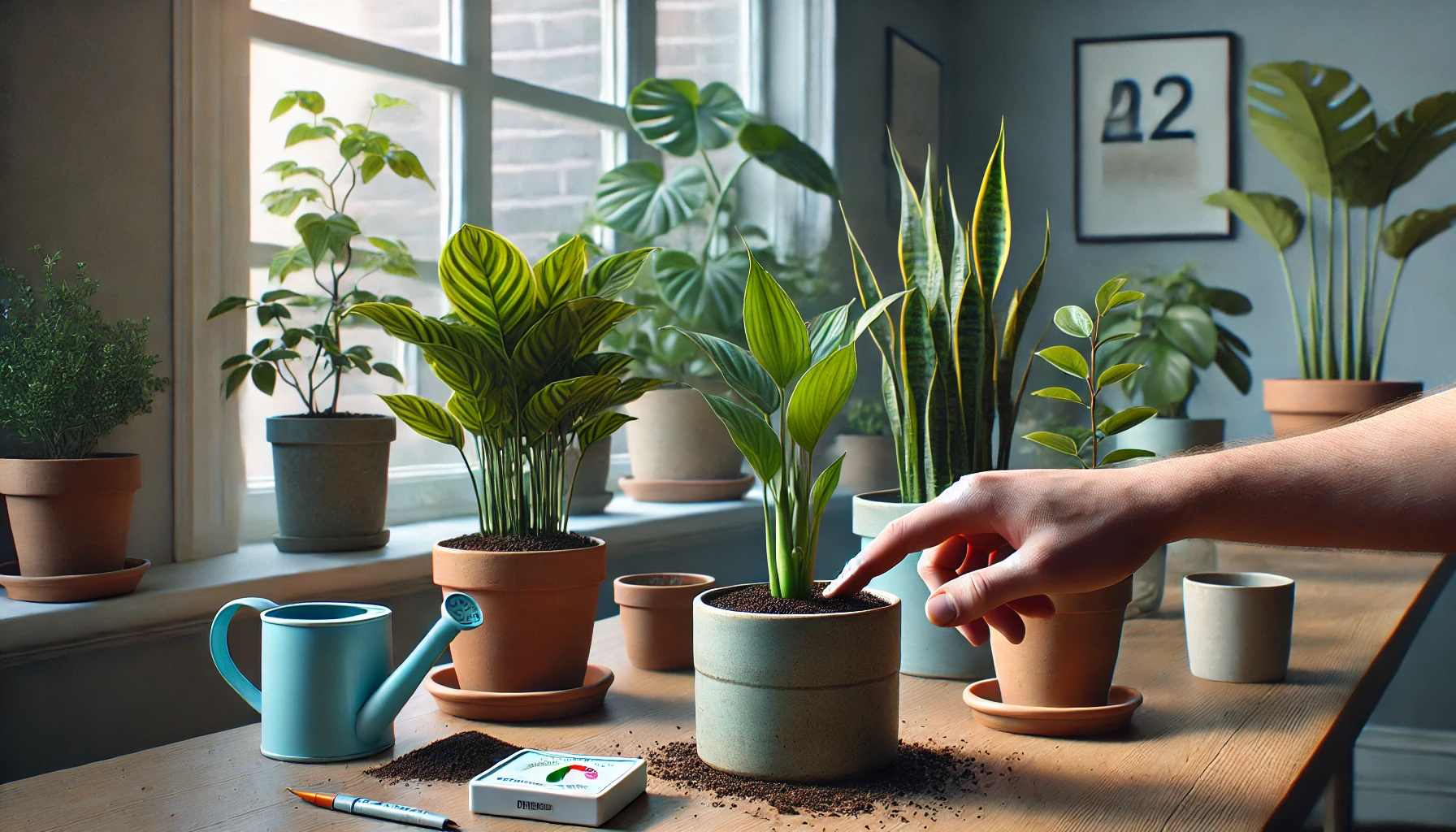Watering is one of the most fundamental aspects of plant care — yet it’s also one of the most misunderstood. Too much or too little water can lead to drooping leaves, root rot, pests, and even death. The key to keeping your houseplants happy is knowing when they actually need a drink.
In this article, you’ll learn how to read the signs your plant gives you, check soil moisture accurately, and build a personalized watering routine that ensures long-lasting plant health.
Why Proper Timing Matters
Plants don’t follow a calendar. Watering them every “Tuesday and Saturday” might seem organized, but it can be dangerous. A plant’s water needs change based on:
- Season (summer vs. winter)
- Humidity
- Temperature
- Light exposure
- Pot size and material
- Plant type
Instead of using a fixed schedule, it’s best to respond to your plant’s actual needs — and here’s how to spot them.
Visual Signs Your Plant Needs Water
Your plant will often show you when it’s thirsty. Here are common visual clues:
1. Wilting or Drooping Leaves
If your plant’s leaves start to sag, it could be due to dehydration. They might perk up after watering — but be careful: overwatered plants can droop too.
Solution: Check the soil before watering. If it’s dry, go ahead. If it’s wet, wait.
2. Dry, Brittle, or Curled Leaves
Crispy edges, curling, or cracking may indicate the plant isn’t getting enough water — or that the environment is too dry.
3. Soil Pulling Away from the Pot Edges
When the soil dries out completely, it can shrink and separate from the sides of the pot.
Tip: This can cause water to drain too quickly. Water thoroughly and slowly so the soil rehydrates evenly.
4. Slowed Growth or No New Leaves
If your plant has stopped growing during an active season, water stress could be the cause.
Note: Lack of light or nutrients may also cause this, so consider the full context.
5. Leaf Drop
Some plants, like ficus trees, drop leaves when they’re underwatered (or overwatered). Check for dryness before assuming the cause.
How to Check Soil Moisture Properly
Instead of guessing, use one of these reliable methods:
1. The Finger Test
Insert your index finger into the soil up to the second knuckle (about 2 inches deep).
- Dry? Time to water.
- Moist? Wait a few more days.
- Wet? Don’t water.
This simple method works for most medium-to-large pots.
2. Wooden Stick or Chopstick Test
Stick a wooden skewer or chopstick into the soil and leave it for 10 minutes. Pull it out and observe:
- If it comes out dry and clean → soil is dry.
- If it’s damp or has soil sticking to it → wait before watering.
Great for small pots where fingers won’t fit.
3. Soil Moisture Meter
These affordable tools give a digital or analog reading of soil moisture levels.
Most meters use a scale from 1 (dry) to 10 (wet). Aim for:
- 2–4: Time to water
- 5–7: Moist, hold off
- 8–10: Wet, do not water
Perfect for those who want precise monitoring across multiple plants.
Consider Plant Type
Some plants prefer drier conditions, while others like consistent moisture. Here’s a general guide:
| Plant Type | Watering Preference |
|---|---|
| Succulents & Cacti | Let soil dry completely |
| Snake Plant, ZZ Plant | Dry between waterings |
| Pothos, Peace Lily | Let top inch dry, then water |
| Ferns, Calatheas | Keep soil consistently moist |
Always research your plant’s specific needs and adjust accordingly.
Environmental Factors That Affect Watering
1. Pot Size
Small pots dry out faster than larger ones.
2. Pot Material
- Terracotta: Breathable, dries out quickly
- Plastic/Ceramic: Retains moisture longer
3. Season
- Spring/Summer: Plants grow more and need more water
- Fall/Winter: Growth slows down, reduce watering
4. Humidity & Heat
Low humidity and high heat increase evaporation, drying the soil faster.
The Importance of Deep Watering
A light sprinkle doesn’t reach the roots. Always water thoroughly until water runs out the drainage holes. This ensures:
- All roots get hydrated
- Salt buildup is flushed from the soil
- Roots grow deeper and stronger
Pro tip: Let the plant sit for a few minutes after watering, then empty any saucer to prevent root rot.
What About Bottom Watering?
Bottom watering allows the plant to absorb water through its roots. It’s useful when:
- The soil has become hydrophobic (repels water)
- You want to encourage deep root growth
- You’re dealing with sensitive foliage
How to do it:
- Place the pot in a container with water.
- Let it soak for 10–20 minutes.
- Remove and let excess water drain.
Occasionally water from the top to flush the soil and avoid salt buildup.
Final Tips for Building a Watering Routine
- Observe daily, water when needed
- Group plants by watering needs
- Use reminders or a plant journal to track frequency
- Don’t assume all your plants need water at the same time
Consistency is great — but flexibility is essential.
Conclusion: Listen to Your Plants
Your plants are always communicating. With practice and attention, you’ll start recognizing their thirst signals and respond like a pro. Every drooping leaf or dry pot is an opportunity to connect, learn, and build trust with your green companions.
By understanding when and how to water, you’ll prevent common problems and keep your houseplants lush, healthy, and thriving.
